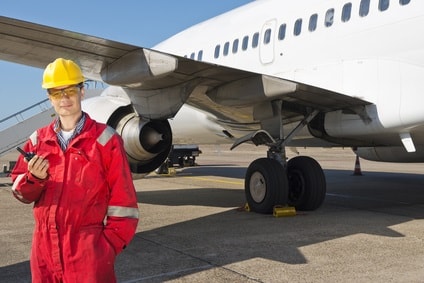Compliance comes with a host of challenges–some of which can be difficult to control – but one of the easiest aspects to manage is equipment and signage wear-and-tear. So, the next time your company prepares for an audit, ensure that you do a thorough check of each and every piece of equipment that you use to produce your product. In your check, you should take the time to make thorough assessments of your safety approval plates, the placards that must be installed onto the viewable areas of your equipment. If you or your team members fall short in this area, your business could be risking being flagged for compliance issues.
A Definition of Safety Approval Plates

Safety approval plates, otherwise known as approval plates, data plates, rating plates, placards, and CSC Safety Approval Plates (for those in freight transportation) are customizable, highly-durable plates that are used to certify that an asset is safe for use. Safety approval plates are required to be used in a host of different industries, in which they are attached to objects like pieces of equipment, aircraft, or even vehicles. All regulatory boards stipulate that safety approval plates must be legible and permanently affixed after the equipment or vehicle is certified by an inspector.
Challenges Associated with Safety Approval Plates
While safety approval plates are non-negotiable in most industries, that doesn’t mean that they don’t come with a fair amount of challenges. Here are some ways your company can make missteps when it comes to its safety approval plates:
- Wear-and-tear – Like any piece of equipment, safety approval plates endure plenty of wear-and-tear, especially when made to endure the elements or when affixed to components that move often. When this wear-and-tear occurs, the information on the safety approval tag can become illegible, or the tag can even be lost altogether. Because the safety approval plate serves as a physical guarantee that the piece of equipment is safe to be used, a lapse in the placard’s quality could mean compliance issues on your end.
- Hard-to-follow standards – The official standards attached to safety approval plates are different depending on the industry, which means that the safety approval plate for military equipment, for instance, might be completely different than ones required in the freight transportation industry. These specifications make it so that, even if your placard is perfectly durable and affixed correctly, you still could be dinged for non-compliance from an inspector if specifications aren’t followed to the letter.
- Changing safety standards – Most safety approval plates bear specific information about the equipment, including critical product names, health and safety warnings, and equipment data. Although it’s not necessarily typical, this information, especially those having to do with safety, can change as time goes on and regulations evolve. This can present a challenge for businesses who hold a large number of components with placards affixed, which makes cross-checking the data on your internal audit to-do list is definitely a must.
Best Practices for Selecting Safety Approval Plates
Although there are a number of ways a negligent manager can overlook compliance details in regards to safety approval plates, if all relevant information is cross-checked, there is no reason to fear non-compliance. In addition to adhering to industry standards, businesses should also follow these best practices for purchasing, maintaining, and displaying their very own safety approval plates: 
- Get a customized safety approval plate – The best way to ensure that you don’t fall into the non-compliance trap is to order completely customized safety approval plates that are specifically made for your industry’s vehicles and equipment.
- Choose the right material – Safety approval plates can be made out of all different types of materials, including aluminum, metal, brass, polycarbonate, and polyester, so it’s important that you remember that the placard must remain a) legible and b) affixed for the duration of the vehicle or piece of equipment’s use in order to be considered in compliance. Consider these guidelines before you choose a material and opt for materials that can keep up with possible corrosion, sunlight degradation, abrasion, extreme temperatures, and chemical exposure, such as Metalphoto® photosensitive anodized aluminum.
- Add safety approval plate checks to your internal audits – Don’t let a simple oversight like a faded safety approval plate be the reason for your company incurring fines or temporary shutdowns. Instead, stay ahead of the curve by adding safety approval checks to your internal audit checklist so that you don’t have to worry that any of yours are expired or illegible come inspection time.
Safety approval plates serve an important purpose, and companies required to have safety approval plates on vehicles, equipment, or other assets should choose wisely to ensure that the required information remains readable throughout the lifespan of their assets. Doing so makes compliance simpler and also cuts down on the costs associated with replacing safety approval plates before you’re ready to retire your assets.

